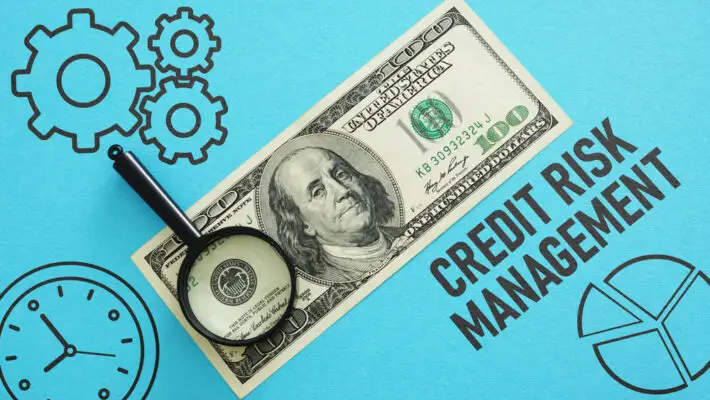It refers to the risk that a borrower may default on their debt obligations, resulting in financial losses for the lender. Credit risk can arise from various factors, including economic conditions, borrower characteristics, and market volatility. Credit risk is an essential concept in the world of finance and banking.
Credit risk is crucial for banks and other financial institutions as it helps them manage their loan portfolios effectively.
Credit risk assessment involves evaluating various factors such as the borrower’s credit history, income level, employment status, collateral offered against the loan, and overall financial stability.
Lenders use different techniques to assess credit risk based on these factors, including quantitative analysis using statistical models and qualitative analysis involving subjective judgments.
The ultimate goal is to determine the probability of default or non-payment by the borrower so that appropriate measures can be taken to mitigate potential losses.

Definition of Credit Risk
Evaluating the likelihood of potential losses from borrower defaults is a pertinent issue in the financial industry. This is known as credit risk, which refers to the possibility that a borrower may not repay their debt obligations as agreed upon.
The definition of credit risk involves assessing the probability of default and quantifying potential losses associated with it.
Factors contributing to credit risk include macroeconomic conditions, industry-specific factors, and individual borrower characteristics. Understanding these factors is crucial to assess an entity’s creditworthiness accurately. There are also different types of credit risks, such as systemic, concentration, and sovereign risks.
Financial institutions use various methods to mitigate credit risk, including diversification of portfolios, setting appropriate limits on exposure to individual borrowers or industries, and implementing rigorous underwriting standards.
Lenders also use credit scoring models to evaluate a borrower’s creditworthiness based on past behaviour and other relevant criteria.
Understanding credit risk assessment is essential for financial institutions to manage their overall portfolio risk and avoid potential losses.
Lenders can minimise their exposure by identifying key factors contributing to credit risk and implementing effective mitigation strategies such as diversification and rigorous underwriting standards while providing necessary financing options for individuals or businesses seeking capital.
Factors Used to Assess Credit Risk
Assessing credit risk requires a thorough analysis of several factors.
Lenders ‘ credit history is crucial when evaluating an individual’s creditworthiness.
Other factors such as income, employment stability, and the level of debt also play a significant role in determining the likelihood of timely loan repayment.
A comprehensive assessment of these elements will provide a holistic view of an individual’s ability to manage credit effectively.
Credit History
Examining an individual’s financial past can provide valuable insight into their loan repayment reliability. Credit history is one of the most important factors lenders consider when assessing credit risk.
It comprehensively records an individual’s borrowing and repayment behaviour, including late payments, defaults, bankruptcies, foreclosures, and collections.
The importance of credit history lies in its ability to reflect an individual’s creditworthiness and predict their future loan performance.
A positive credit history indicates an individual has a good track record of repaying debts on time and managing their finances responsibly.
This improves their chances of being approved for loans with favourable terms, such as lower interest rates and higher borrowing limits. On the other hand, a negative credit history suggests they are high-risk borrowers who may default on their loans or make late payments.
This makes it difficult for them to obtain loans or credit cards at competitive rates. Therefore, maintaining a healthy credit history is crucial for individuals who want to secure favourable financing opportunities in the future.
Income and Employment
One’s income and employment status are significant factors when evaluating eligibility for favourable financing opportunities. Lenders typically require borrowers to provide salary verification, such as recent pay stubs or tax returns, to ensure that they have a stable source of income and can afford the loan payments.
This information helps lenders determine the borrower’s debt-to-income ratio (DTI), a critical factor in assessing credit risk.
A high DTI indicates that a borrower may struggle with making repayments, while a low DTI suggests they are more capable of managing their finances. Another important aspect of credit risk assessment is job stability.
Lenders often prefer borrowers who have been employed for an extended period because it shows that they have a reliable source of income and are less likely to default on their loans.
Additionally, those who work in stable industries with steady growth potential may be viewed more favourably than those in volatile fields where layoffs are common. One’s income and employment status play crucial roles in determining their creditworthiness, and borrowers should maintain stable employment while ensuring they can comfortably afford any loans they apply for.
Level of Debt
The debt burden can weigh heavily on individuals, making it imperative to carefully evaluate their current level of indebtedness to determine whether they can take on additional financial obligations.
Creditors and lenders use this evaluation process to assess creditworthiness and the likelihood that borrowers will default on their loans. High debt levels indicate a higher risk of default, which translates into higher credit risk.
Debt management plays an important role in mitigating credit risk. An individual who manages their debts effectively by paying bills on time, keeping balances low, and avoiding unnecessary borrowing demonstrates responsible financial behaviour.
In contrast, someone with multiple delinquent accounts or high balances is more likely to default on future payments and is considered a higher credit risk.
Thus, maintaining a healthy level of debt through effective debt management and credit utilization is essential for managing personal finances and reducing credit risk.
Types of Credit Risk
Default risk is one of the most common types of credit risk, as it involves situations where borrowers are unable or unwilling to make timely payments. This type of credit risk is particularly relevant for lenders who extend loans to individuals or companies with poor credit histories.
Concentration risk is another type of credit risk that arises from over-exposure to a particular industry or geographic region. Lenders with a high concentration of loans within specific sectors or regions face greater risks if there are any negative economic shocks affecting those areas.
This type of credit risk can also arise from lending too much money to a single borrower, which exposes the lender to significant losses if that borrower defaults.
Finally, other types of credit risks are associated with lending activities, such as market risk and liquidity risk. Market risk refers to fluctuations in interest rates or asset prices that can negatively impact the value of outstanding loans held by lenders.
Liquidity risks arise when lenders are unable to meet their own funding obligations due to unforeseen events such as runs on deposits or sudden changes in market conditions.
Mitigating Credit Risk
One such strategy is risk management, which involves identifying, assessing, and prioritizing risks to create a plan for minimizing their impact. This approach allows lenders and investors to proactively take steps to mitigate credit risk by developing policies that reduce the probability and severity of default.
Another effective method for mitigating credit risk is thorough credit analysis. Credit analysis involves evaluating borrowers’ financial statements, cash flow projections, credit history, and other factors to determine their ability to repay debt obligations.
Finally, diversification is another key strategy for mitigating credit risk. Diversification involves spreading investments across different industries or asset classes to reduce overall exposure to any single borrower or sector.
This approach can help minimize losses if one investment experiences difficulty repaying its debt obligations.
Impact of Credit Risk
Loan approval and interest rates are significantly affected by credit risk, as lenders typically charge higher interest rates to compensate for the increased likelihood of default.
Credit risk can also harm financial stability, as defaulting loans can lead to significant losses for lenders and potentially trigger a wider economic downturn.
Loan Approval and Interest Rates
When assessing loan applications, financial institutions consider the applicant’s credit history, income level, and employment stability to determine the appropriate interest rate. This process aims to evaluate the borrower’s creditworthiness and ensure that they can repay the loan on time.
If an applicant has a good credit score and a stable source of income, they are considered less risky and may be offered lower interest rates.
However, if an applicant has a poor credit score or unstable employment history, they may be deemed riskier by the lender and offered higher interest rates to compensate for this risk.
Lenders may also require collateral or a co-signer to secure the loan before approval. Ultimately, loan approval and interest rates depend on several factors, such as the borrower’s creditworthiness assessment and ability to meet repayment obligations.
Financial Stability
Assessing an applicant’s financial stability is vital in determining loan approval and interest rates. This is because lenders must be confident that borrowers can repay their loans on time.
Financial stability can be evaluated by looking at an individual’s credit history, income level, employment status, and debt-to-income ratio. A good credit history indicates a borrower has a track record of making timely payments.
A stable income and employment status suggest that they have the means to repay their debts. A low debt-to-income ratio indicates a borrower has enough income to cover their existing debts and any new ones they may take on.
Aside from assessing the financial stability of individual borrowers, lenders also need to manage credit risk at the portfolio level. This involves diversifying their loans across different types of borrowers and industries to minimize the impact of defaults on their overall portfolio.
Managing credit risk also involves setting appropriate interest rates based on each borrower’s creditworthiness. Higher-risk borrowers typically receive higher interest rates to compensate for the increased likelihood of default.
In comparison, lower-risk borrowers receive lower interest rates as an incentive for borrowing from that lender over competitors who may charge higher rates for similar loans.
Economic Effects
The economic effects of credit risk can be far-reaching and detrimental to businesses, financial institutions, and the broader economy.
Credit risk can result in significant losses for lenders, reducing lending capacity and liquidity issues in financial markets.
Moreover, borrowers who default on loans may face bankruptcy or foreclosure, leading to job losses and decreased consumer spending.
In turn, this can cause a ripple effect on other sectors of the economy, such as retail sales, manufacturing output and, ultimately, GDP growth.
To mitigate these risks, financial institutions have adopted various risk management strategies such as diversification of assets portfolios and establishing robust systems for monitoring credit quality.
In conclusion, credit risk has become an increasingly important issue that needs careful consideration by all economic stakeholders.
Understanding its economic impact is vital for policymakers and regulators to ensure appropriate measures are taken to manage risks effectively and safeguard financial stability.
Financial institutions must also adopt sound risk management practices to avoid potential losses resulting from credit defaults while at the same time providing adequate access to finance for individuals and businesses alike.

Frequently Asked Questions
What is the difference between credit risk and market risk?
Credit risk refers to the potential loss an investor may incur due to a borrower defaulting on their financial obligations.
On the other hand, market risk refers to potential losses arising from changes in market conditions such as inflation rates, interest rates, or even political instability.
The irony is that while both are risks that investors face, they affect investments differently.
It’s also important to note that there’s another type of risk – operational risk – which involves risks associated with internal systems and processes within an organization rather than external factors such as credit or market risks.
How do credit rating agencies evaluate credit risk?
Credit rating agencies evaluate credit risk by assessing various factors, such as the issuer’s financial health, market conditions, and macroeconomic indicators.
They use specific criteria to assign a credit rating that reflects the likelihood of default on the issuer’s debt obligations.
These criteria include financial stability, industry outlook, management quality, and competitive position.
Credit rating agencies also consider credit risk management strategies issuers employ to mitigate potential losses from credit defaults.
What are some common methods for mitigating credit risk?
One common method for mitigating credit risk is through risk diversification. This involves spreading out investments across multiple borrowers or sectors to minimize the impact of a single default.
This method requires borrowers to put up assets as security against the loan, which can be seized if they fail to repay the debt. Collateral provides lenders with insurance and helps reduce their overall risk exposure.
Both methods are commonly used in financial markets to mitigate credit risk and protect investors from default losses.
Can credit risk be eliminated in a business context?
Ironically, credit risk can be eliminated in a business context. While credit risk management strategies and techniques have been developed to mitigate the adverse effects of defaulting borrowers, complete elimination of this risk remains elusive.
Credit risk assessment involves identifying potential risks and applying suitable measures to manage them effectively. However, no matter how robust these measures may be, some uncertainty will always be associated with lending money.
Therefore, businesses must adopt a comprehensive approach towards credit risk management that considers all relevant factors and incorporates multiple strategies to minimize the impact of potential defaults.
How does a company’s credit risk affect its borrowing costs?
The impact of credit risk on a company’s borrowing costs is significant and can be analyzed through cost analysis.
Credit risk refers to the likelihood that a borrower will default on their debt obligations, which can result in financial losses for lenders. Lenders may charge higher interest rates or require collateral to mitigate this risk.
A company with high credit risk may find it more difficult to secure favourable lending terms, whereas a company with low credit risk may enjoy lower borrowing costs.

Conclusion
Credit risk is an essential aspect of the financial sector. It refers to the likelihood of a borrower defaulting on their debt obligations, thereby causing losses to creditors. Creditors use various factors to assess credit risk, including financial ratios, creditworthiness, and payment history.
There are different types of credit risk, such as counterparty, concentration, and country. Mitigating credit risk involves diversifying investments across industries or geographical locations and setting up internal controls.
The impact of credit risk can be significant for both lenders and borrowers. A real-life example is the 2008 global financial crisis caused by subprime mortgages in the United States.
Banks had extended loans to borrowers with poor credit histories who could not repay their debts, leading to many defaults and foreclosures. As a result, banks incurred massive losses that resulted in a worldwide recession.
Understanding credit risk is crucial for any lender or borrower in managing their finances effectively. The ability to identify and mitigate risks through sound investment strategies can help prevent financial losses from occurring while ensuring sustainable growth.

Chris Ekai is a Risk Management expert with over 10 years of experience in the field. He has a Master’s(MSc) degree in Risk Management from University of Portsmouth and is a CPA and Finance professional. He currently works as a Content Manager at Risk Publishing, writing about Enterprise Risk Management, Business Continuity Management and Project Management.

